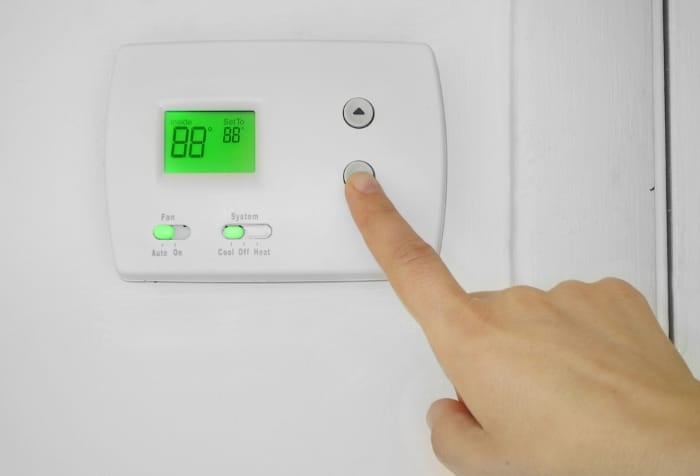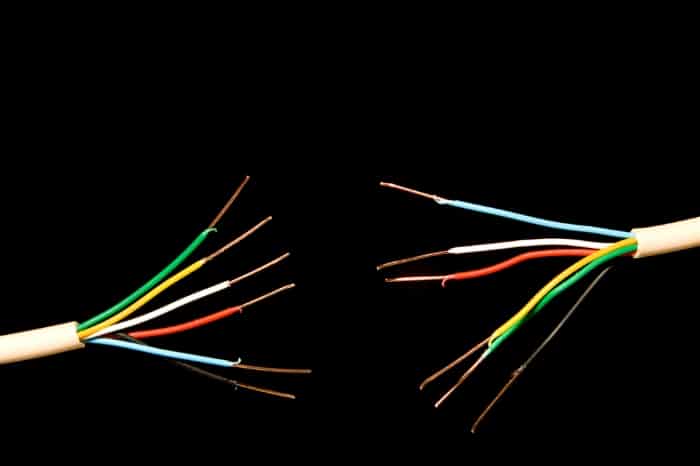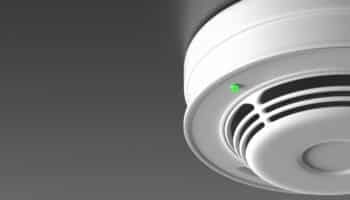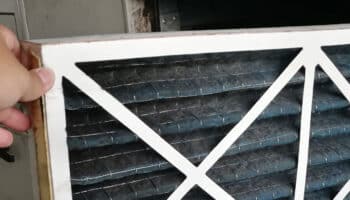Your furnace fan won’t turn off, and you can’t figure out why?
You’re not alone! In fact, thousands of homeowners find themselves in a similar situation as yours every year. Furnaces are wonderful at keeping us warm during freezing nights and harsh winter months. However, when they fail, they can leave you frustrated, confused, and, most importantly, shivering in the cold.
I understand how having your furnace fan not turn off when you need it to can be annoying and inconvenient, but don’t worry; you’ve come to the right place for answers. Below, you’ll find a list including the 5 most common reasons behind a furnace fan that won’t turn off and simple solutions for each one.
When your furnace fan won’t turn off, it can be due to bad thermostat settings, a faulty/stuck limit switch, a faulty thermostat, or a bad relay switch. The issue can also be caused by several wiring problems.
Keep reading to get your furnace fan to turn off!
Why Your Furnace Fan Won’t Turn Off
Furnaces are complex appliances that rely on many different components to work normally and deliver the results we’re used to. When your furnace fan won’t turn off, there can be many things to blame; however, I’ve found that some culprits are more commonly responsible for such an issue than others.
To help save you time, effort, and money, here are the 5 main things you must consider first when you’re having furnace fan issues.
#1 Bad Thermostat Settings
Let’s start off by talking about how bad thermostat settings can be to blame when your furnace fan won’t turn off, no matter what you do.
Configuring your furnace properly is essential to ensuring that it works normally and delivers as much efficiency as possible in terms of heating and power consumption. However, if you have the fan settings on the “ON” position instead of “Auto,” the fan will run continuously, regardless of the furnace’s temperature or condition.

My usual advice is to keep the settings on “Auto,” as that will allow the appliance to regulate itself better and only activate the fan when necessary while keeping it off when not needed.
Solution: Depending on your furnace’s brand and model, there will be different ways to adjust the thermostat and change its settings from “ON” to “Auto”. Please check your User Manual to find the right instructions for your specific appliance.
If you no longer have the manual handy, that’s okay; please refer to our free resource below to find it.
#2 A Faulty/Stuck Limit Switch
The next possible reason why your furnace fan won’t turn off is that the limit switch inside the appliance is either stuck or faulty. In a nutshell, the limit switch is what prompts the appliance’s blower fan to turn on or off as it reaches a certain temperature.
When the switch works normally, the furnace’s blower fan can adjust its settings, speed, and activation time without any issues; however, if the switch is stuck in the “ON” position or is faulty, the process can be affected greatly.
Solution: In my experience, the easiest way to tell whether the limit switch is faulty is by closely observing how the appliance works and whether the fan turns off after a while. If not, that’s your first confirmation that the switch is either stuck or not working as it should.
To confirm your suspicions, you can access the limit switch directly and use a multimeter to test the component for continuity. Here’s what you have to do:
- Unplug the furnace from the wall outlet or cut off power to the appliance from the circuit breakers.
- Turn off the gas valve supplying gas to your furnace.
- Check your User Manual for an approximate location of your furnace’s limit switch.
- Access the limit switch and use the multimeter to test the part for continuity.
- If the readings show that the limit switch is bad, the best course of action will be to replace it.
Depending on your furnace’s brand and model, replacing the limit switch can be as cheap as $10 or much more expensive. If you’re not confident in doing the testing and replacement of the switch yourself, please get in touch with a professional for help.
#3 A Faulty Thermostat
Having checked your furnace’s limit switch, let’s now move on to considering a faulty thermostat as another possible culprit when the appliance’s fan won’t turn off.
In the first point, we discussed how it’s important to have the thermostat set properly to allow the furnace to regulate itself and the blower fan; however, if the component is failing, adjusting the right settings alone won’t be enough.
There’s also the possibility that the thermostat is improperly calibrated, thus sending the wrong readings to the furnace and keeping it running non-stop.
Solution: I’ve found that, similar to the limit switch, testing the thermostat and ensuring it’s properly calibrated can go a long way in getting things back to normal.
First, try adjusting the furnace’s temperature via the thermostat and see how it responds to your dialed changes. If you notice the temperature isn’t changing significantly, and the fan won’t turn off after a while, you’ll have to look closer.
Repeat the steps from the previous point to safely cut off power and gas to your furnace and access the thermostat. Use your multimeter to test the thermostat for continuity and replace it if the readings are off.
Calibrating the thermostat properly can be simple or complex, depending on the furnace. If you’re unsure about the process, please ask a certified HVAC technician you trust any questions you have.
#4 A Bad Relay Switch
A bad relay switch can also explain why your furnace fan won’t turn off. The relay switch, in conjunction with the limit switch, controls when the blower fan activates and deactivates as the furnace reaches a desired temperature.
When the relay switch fails, the furnace will have difficulty communicating with the fan motor, the Control Board, and the rest of the furnace’s internal components to turn the fan on and off as needed.
Solution: As with the limit switch and the thermostat, my usual advice when you suspect you’re dealing with a bad relay switch is to test it and replace it if you suspect it’s not working correctly.
Relay switches are not typically expensive, as they can start from as little as $18. However, if you own a high-end furnace or a model known for having hard-to-find replacement parts, you could pay much more.
#5 Wiring Issues
Lastly, let’s consider general wiring issues as another possible reason why your furnace won’t turn off. As with several other appliances, furnaces have complex internal wiring layouts that allow them to communicate with each other and work in conjunction.
When the wiring is intact, your furnace will work as you expect it to and deliver great results; however, the appliance’s internal wiring can wear out over time, become frayed, loose, or break altogether. Sometimes, even rodents can get into the furnace and chew on the wiring, so no possibility is too crazy.

Solution: Out of all the potential causes and solutions to a furnace fan that won’t turn off, wiring issues are the most complex and tedious to check, as you’ll need to put your eyesight to the test and try to spot even the most minimal signs of damage.
Look for loose wires, frayed cables, broken connections, and anything else that can indicate there’s an issue with the furnace’s way of communicating internally with all its components. If you spot anything out of the ordinary, you’ll have to refer to your furnace’s wiring diagram.
If you’re unsure about the process or don’t feel qualified to take on this particular challenge, there’s no shame in calling a professional in for help. Granted, you’ll have to pay extra for the technician’s rate, but hey! Better safe than sorry.
When Are Repairs Not Recommended?
In this article, I’ve covered the most common reasons behind a furnace fan that won’t turn off; however, there are more serious, less common causes behind the issue that require homeowners to weigh their options more carefully.
A good example is a broken fan motor. The fan motor communicates with the furnace’s Control Board, relay and limit switches, and the thermostat to adjust its settings and deliver the right performance. However, if the motor fails, it won’t be able to do what the other components are telling it to do, resulting in several issues.
Since the fan motor is considerably more expensive than the other components listed in this article ($100-+$1,000), my usual advice, if you suspect it to be the source of the problem, is to consider how much you paid for the furnace, how old the appliance is, and whether it’s a high-end model.
Sometimes, it’s more cost-effective to replace the entire furnace rather than pay 50% or more of the price of a brand-new appliance. Try contacting an HVAC technician you trust for a quotation on the fan’s motor replacement, as professionals can often get discounted rates from manufacturers and third-party vendors.
Getting Your Furnace Fan Back to Normal
That about covers it!
When your furnace fan won’t turn off, feeling frustrated and confused is normal, as you rely on the appliance to endure cold days and stay comfortable.
Luckily, as I hope this piece has helped you better understand, addressing the most common causes behind a furnace fan that won’t turn off is often easy and quick. More often than not, something as simple as testing and replacing the relay switch and ensuring the appliance is set to “Auto” and not “ON”, will do the trick.
Thanks for reading. If this article was useful and answered your most burning questions, please check out our other resources and free guides below and consider subscribing to our newsletter.
Have a wonderful day!
-Craig.









